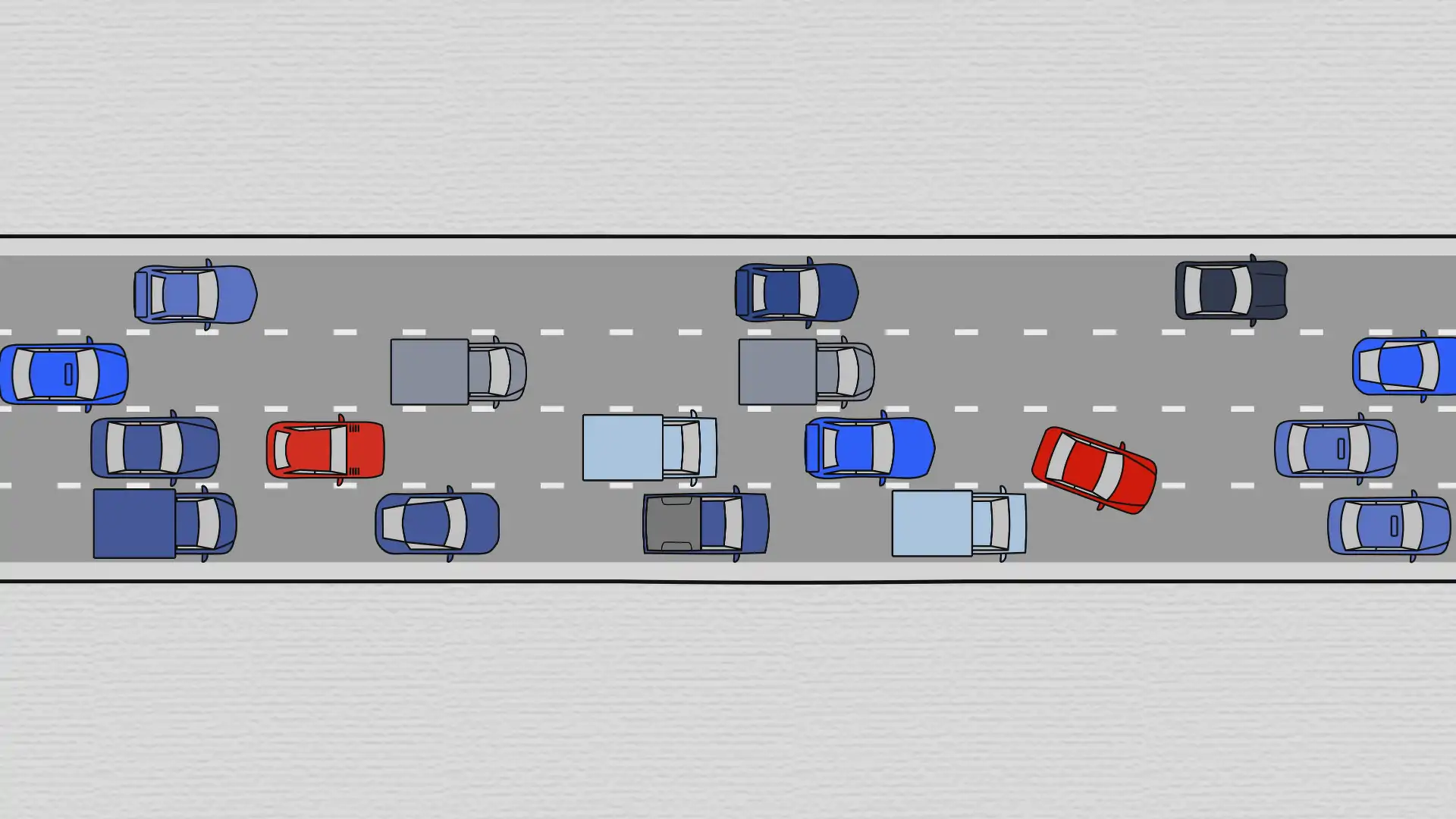What happens if everyone stops driving?
We discussed earlier this week the fact that moving too slowly in the left lane or changing lanes is worse than speeding. We now have traffic as a hot topic for driving.
You probably already know the basics of traffic patterns and what causes traffic jams. What is the main problem with traffic at intersections? The first car that gets a green light accelerates and the next one follows suit. If all cars accelerate simultaneously then more vehicles will pass under green light than usual. In other words, coordination is more important than the number of cars. It’s as simple as that.
As you can see, more intersections means more coordination, which in turn equals more traffic. Big cities tend to have more roads that don’t intersect – merging yes, but stopping and no intersections.
Why do we also get stuck in traffic jams on the highways? The “accordion effect” is the reason why cars slow down when a chicken crosses the road. Next, the car behind it slows down as well, which causes all other vehicles to do the same. It is sometimes called the “traffic snake”, which eats oncoming cars and then poops them out of one side
To prevent this, it is important that drivers maintain a constant distance between themselves and the car in front. Why? This allows us to avoid overbraking and gives the driver behind enough time.
Here’s the problem: human reactions. Human reaction is slow, we make mistakes and waste time. Autonomous cars could solve all of these problems. They communicate better than us and have faster responses. The intersection will be more efficient if there are more self-driving vehicles.CGP Gray says that we can eliminate intersections completely if humans are banned from the roads. We’ll need to wait at most a few decades before we can see if this works.